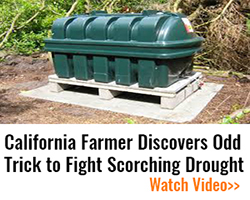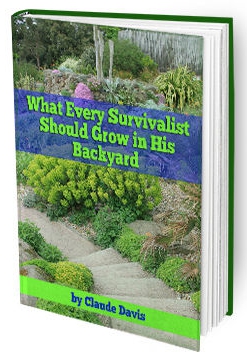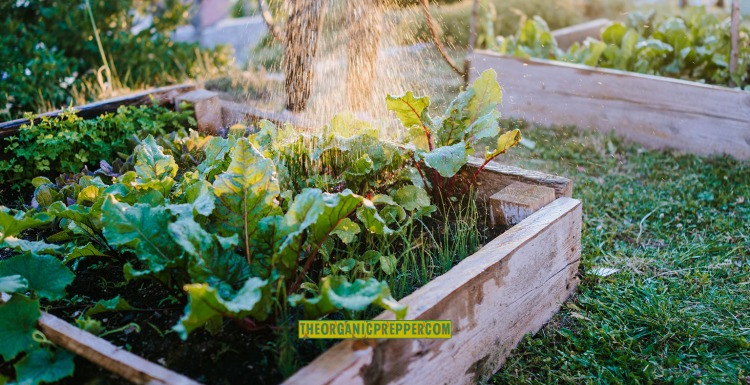Choosing to grow your own urban vegetable garden is a massive step towards self-reliance. With current events being what they are, supply disruptions, rising prices, and all that, every bite you can provide for yourself and your family is a step in the proper direction. In this article, I will discuss the basic considerations involved in starting your urban garden.
As Daisy says, “It’s time to become a producer instead of a consumer.”
Ordinances of urban gardening
Ah, the bureaucracy! Many municipalities, including mine, have ordinances covering vegetable gardens. One is wise who learns these in advance, for the Internet abounds with horror stories of citizens crossing local government. Therefore, forewarned is forearmed. For example, my city has ordinances covering setbacks, which is the distance my garden must be from sidewalks, property lines, and my house.
There are also regulations covering compost piles. While I’m allowed to collect rainwater, my barrels must not be visible from the street. If you’re an apartment or condo dweller, the management or association may also have rules in place. What are the laws covering gardens in your situation?

Urban vegetable garden siting and lighting
Now that you’ve researched the local laws and are good to go legally, where do you plan to put your garden?
If you’re a homeowner, you can site the garden in your yard. Preferably your backyard to keep prying eyes to a minimum. I live right across the street from a high school. Kids often don’t think very far ahead. Someone might see your garden and decide to grab something that looks yummy without considering the effort put into that veggie or the plans you had for it. So the backyard is preferable. And may also help keep the city inspectors from bothering you. Bonus!
The strongest and best light for growing vegetables is typically south and east. Ideally, your garden should be situated to take advantage of this. Light will dictate much of what you can grow. For example, tomatoes need at least 6-8 hours of direct sunlight per day. If your garden doesn’t get that, consider either a different spot or a different menu. There are many shade-living plants, most notably spinach and other greens.
Let’s not forget the water for your urban garden
Where is your water source?
I can think of few things worse than hauling buckets every day, so it would be better to have your garden within reach of an outside spigot. Connecting to a soaker hose and walking away is far better than standing there, by the way. A typical vegetable garden requires about 1″ of water per week, more during the hottest part of summer.
If you’re an apartment or condo dweller, much of the same applies. You’ll have to scale down a bit if you can’t get space in the yard. A container garden might be your best option. Worry not! Nearly anything can be grown in containers. I’ve produced everything from greens to squash and potatoes in them.
You’ll want to think about how much weight your lanai can take if that’s where you plan to grow. Management might even have a rule about that stuff, leaving you no choice but to grow indoors or rent a space with your local Community Gardens. That latter usually rents plots very cheaply for the season! Mine rents plots anywhere from $10-$25. Check yours out! It may be a very worthwhile investment.
What should I grow in my urban garden?
My local urban agriculture initiatives have a saying: grow what you eat and eat what you grow.
If you’re not sure what exactly that is, I suggest spending one week writing down everything on your plate that could be grown. Do you like to eat salads? Write down the ingredients and include the veggies on your list. From there, you can narrow items down to what can be grown in your garden.
Knowing your USDA grow zone will help. Learn your frost and freeze dates. Then you’ll know how long your growing season is, which will help you decide what you can plant. Some plants take longer to mature than others, so the length of your growing season matters.
Check out The Organic Prepper’s sister site, The Frugalite for amazing money saving tips and recipes to use your home-grown veggies.
Where will I get the plants?
For first-time gardeners, I always suggest buying them.
Your city is likely to have at least one gardening center or farmer’s market. Those places will stock varieties that grow well in your area. And, those places will have hardened off the plants so you won’t have to.
Seed starting isn’t difficult, but it does take some knowledge and effort. For beginners, I suggest focusing on the garden. Set yourself up for success by starting small. Taking on too much is a recipe for disaster and discouragement. So start small and focus on the garden itself. You’ll grow in knowledge over time. (As Joanna writes, gardening is a skill learned by trial and error. )
If you do decide to start with seeds, Seeds for Generations has everything you need!
Do I plant my urban garden in the ground, raised beds, or containers?
Typical vegetable gardens are grown either in-ground, raised beds, or containers, or a combination of these. Your choice depends on several factors: soil type, house vs. apartment or condo, and how much you enjoy bending over to weed.
For example, my soil has lots of clay, which isn’t the best growing medium for most vegetables. I live in a house, and bending over isn’t my favorite activity due to back issues. Therefore, I have mostly raised beds and containers. I elevated one of my larger containers, so I need not bend at all. For the rest, knee pads are an immense help. What’s the best combination for your situation?

What tools do I need for urban gardening?
For my urban garden, most of my everyday tools fit into a standard-sized cloth bag. This bag holds my beloved knee pads, of course, along with my clippers, two trowels (one marked with measurements), a small measuring cup (for side-dressing fertilizer), hemp twine, Kevlar coated gloves, and a Swiss Army knife.
Let’s not forget my water bottle! Gardening is sweaty work.
Other tools that live in my shed include a spade, a broad fork, a rake, and a wheelbarrow. Nothing fancy. All very handy. Many can be acquired cheaply at yard or estate sales. If you have to buy something new, it’s an investment. I’ve had some of my tools for ten years and counting.
Ready to start your urban garden?
So now you have the basic principles of planning your first garden: where to put it, what to plant, where to get plants, your essential toolset, and you know to research local laws before doing anything. I’ll expand on all of these topics and more in future articles, but you have what you need to get started.
source : Jayne Rising



